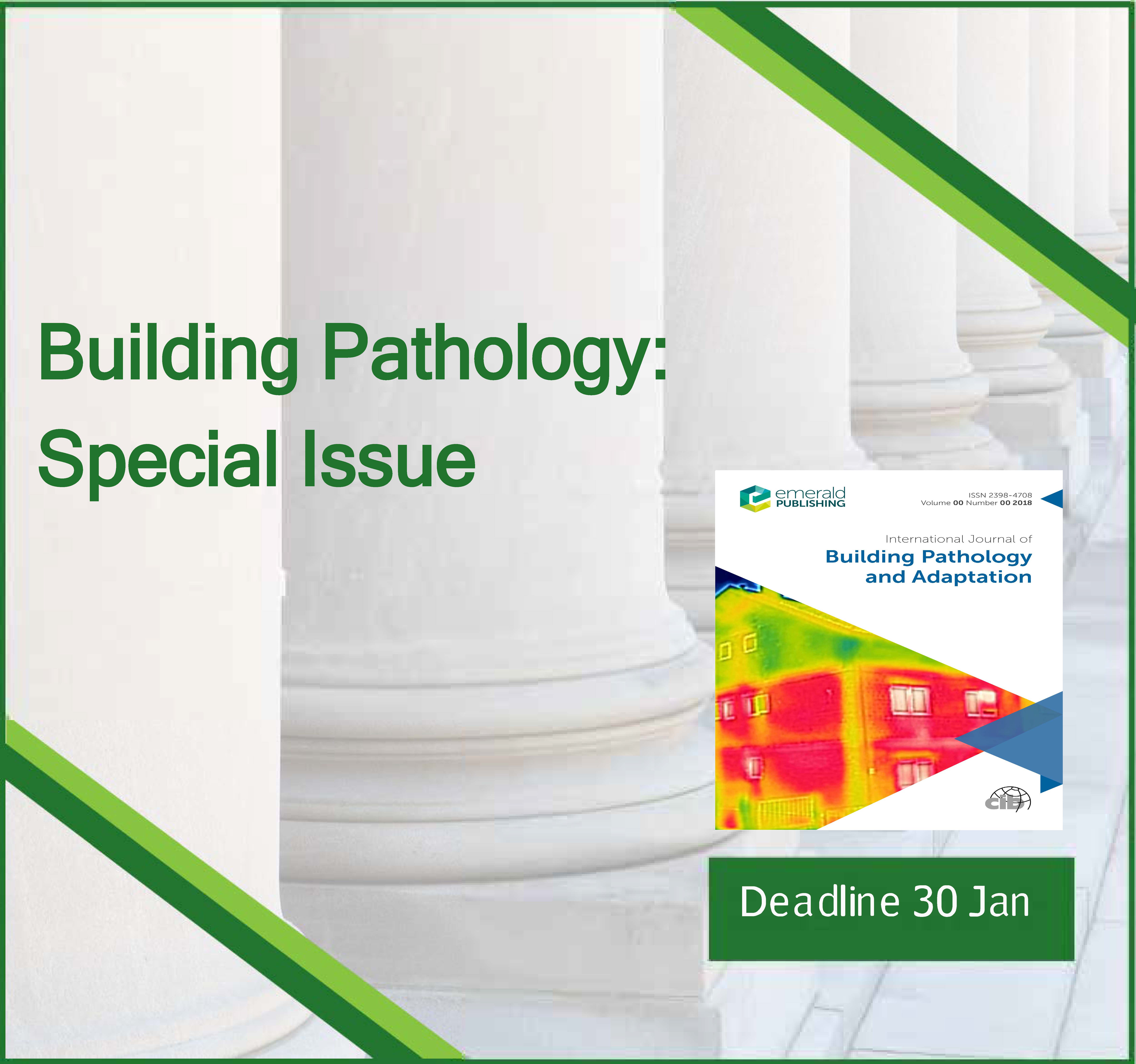Overview of special issue
Today’s building pathology studies should be oriented to systemize the knowledge from the past, good previous experiences but also focused on the new challenges of construction and rehabilitation industry. There is a growing need for more ready access to available knowledge, based on new technologies, and more feedback but in a structured and continuous way. The complexity of buildings is increasing and new materials and constructive systems are being applied in new or existent buildings. The monitoring of buildings performance under real exposure conditions should be the basis of new trends in this field.
Nowadays a new concept of sustainable development, primarily based on the quality of life and lower impacts on the natural environment, increase the importance of having specific intervention criteria and methodologies based on a building pathology knowledge. The early detection of building failures can help in reducing conflicts and costs. Building pathology should have new insights about the ICT technology, internet of things, uncertainty and risk analysis, advanced diagnosis techniques and forensic engineering approaches, with a consensual approach in the scientific and technical community.
Building pathology is a very ancient occurrence but it needs new approaches to be dealt with. The building stock has increased exponentially in the last century and there is need for faster and more efficient ways to inspect, diagnose and maintain/rehabilitate current buildings with pathology problems. The challenge is therefore that of benchmarking and systemizing all procedures linked with building pathology and use advanced tools, knowledge and technologies to improve today’s practice, by reaching out to professionals in the field.
Indicative list of themes
- Building pathology best practice cases
- Advanced methods in building pathology
- Forensic engineering
- ICT technology applied on building pathology
- Sustainability in building pathology
- Life Cycle Assessment in Building pathology
- Other related issues.
Submission information
To submit a manuscript, please do so by going to ScholarOne.
To view our Author Guidelines, please click here.


